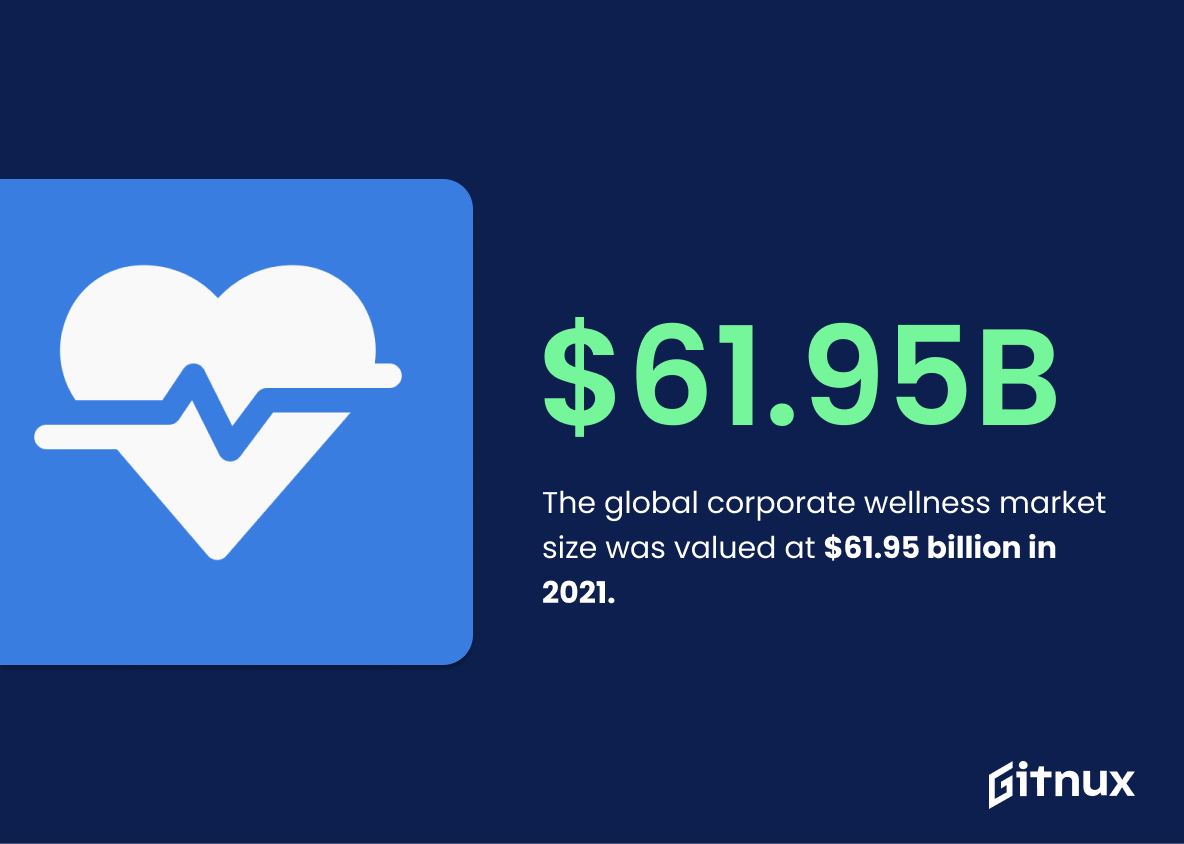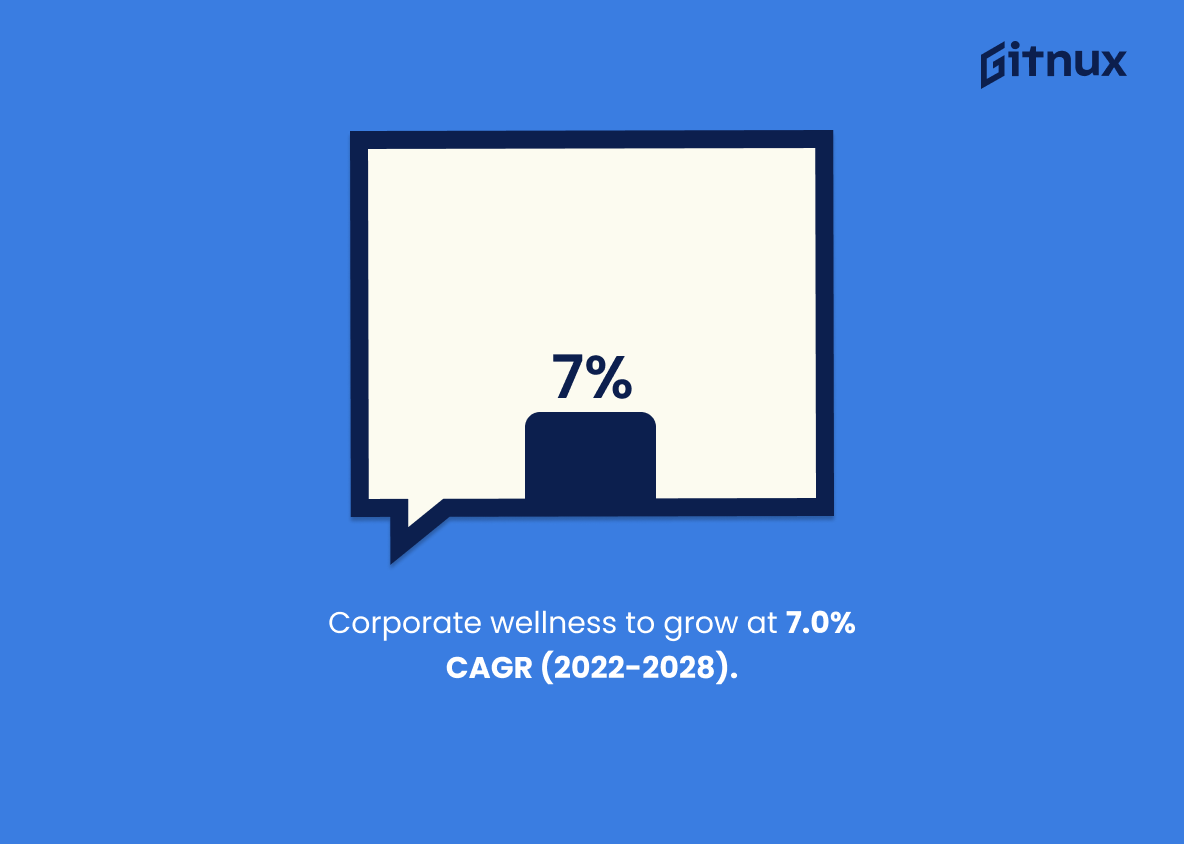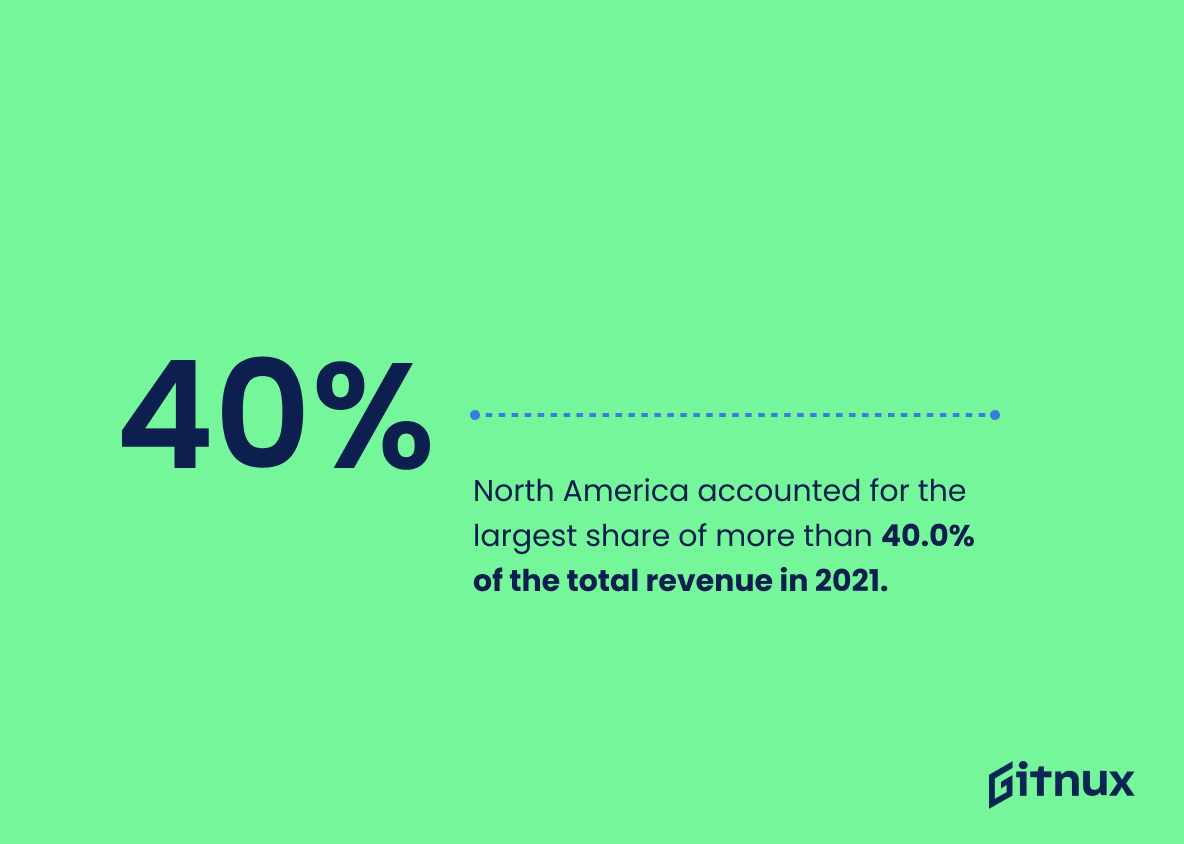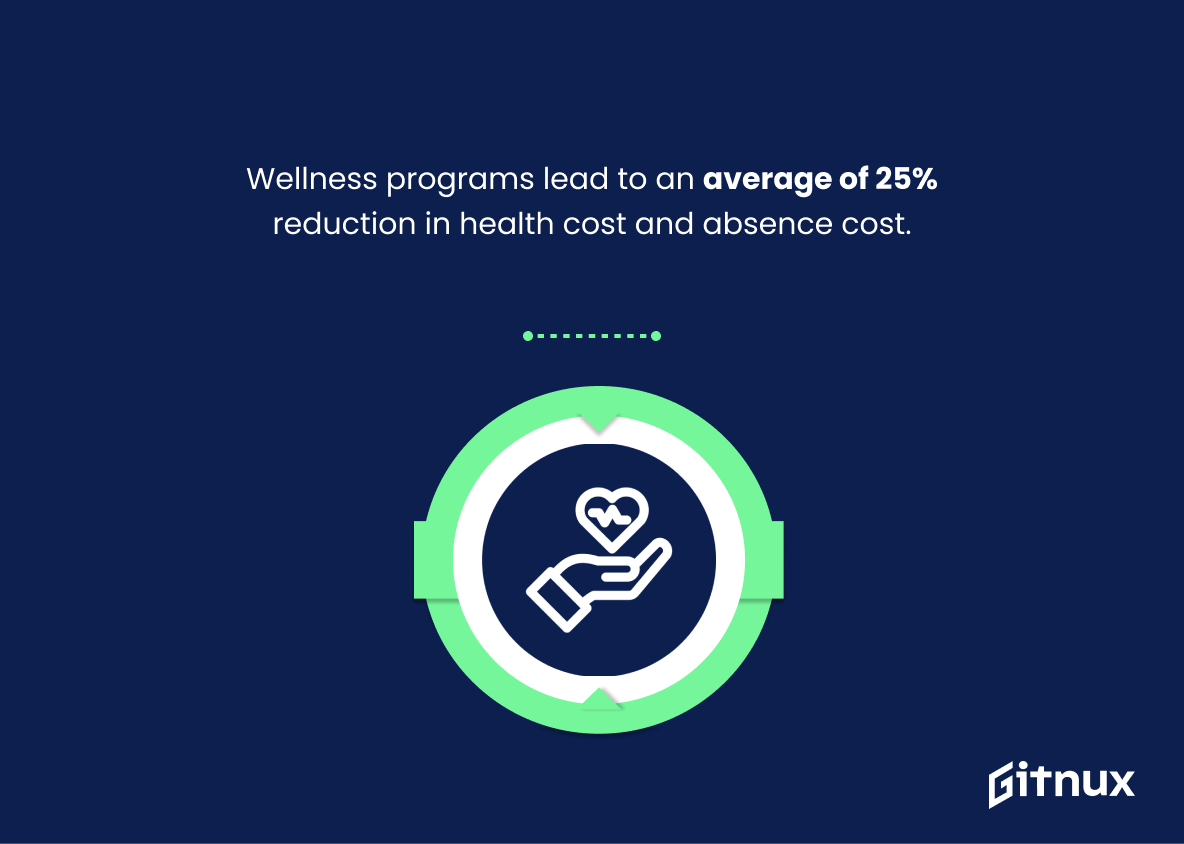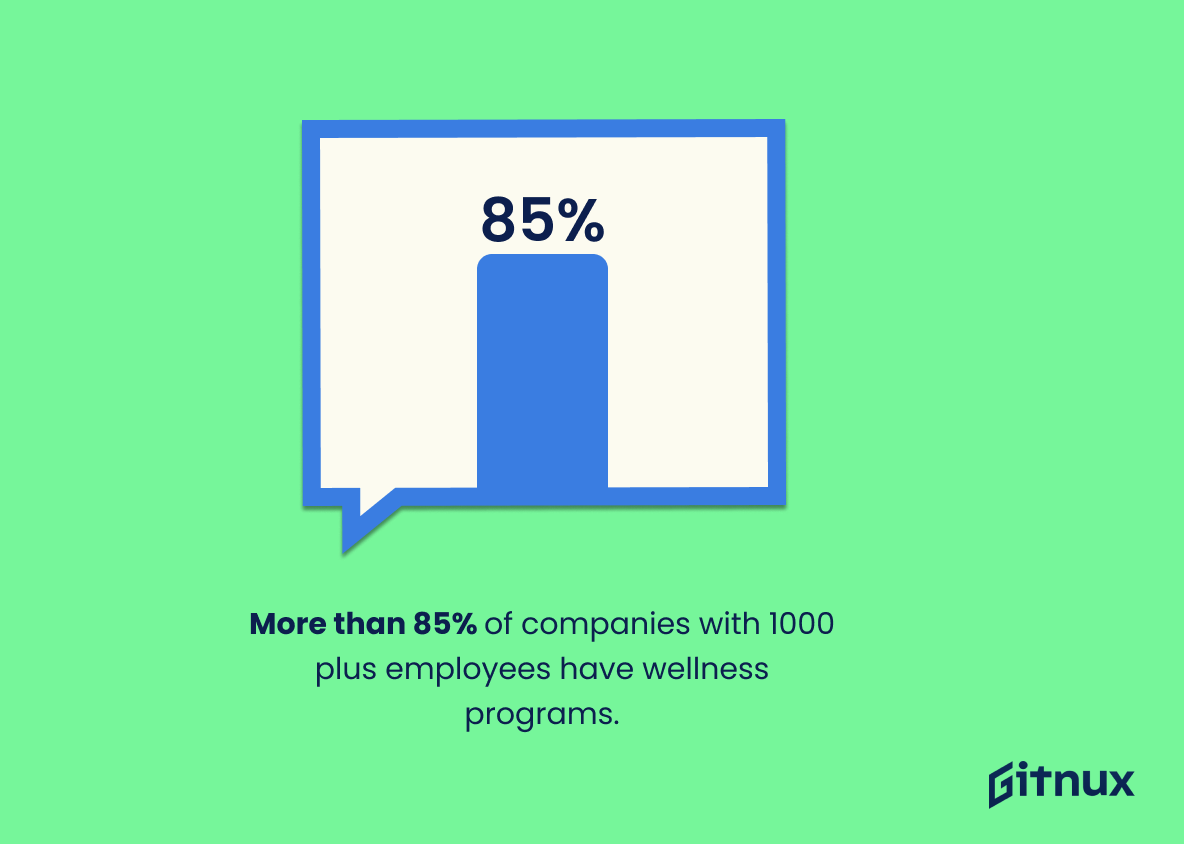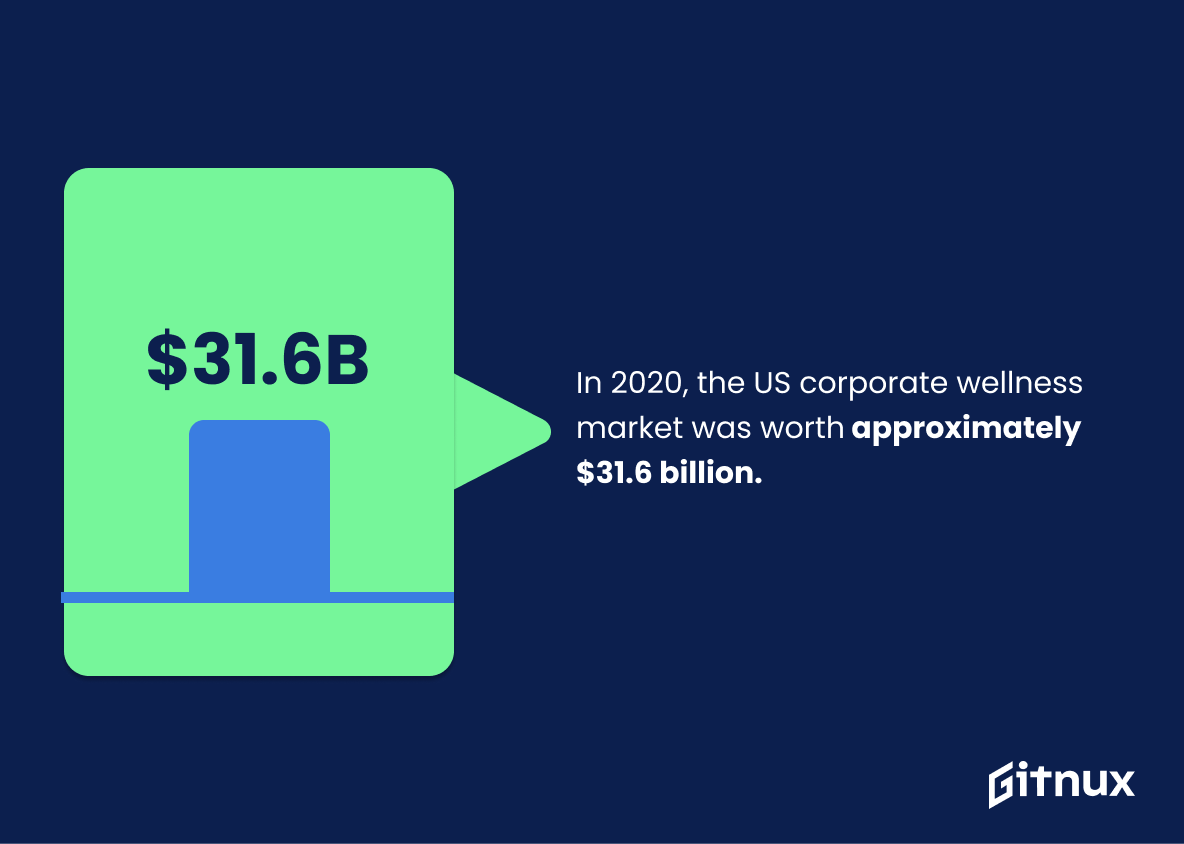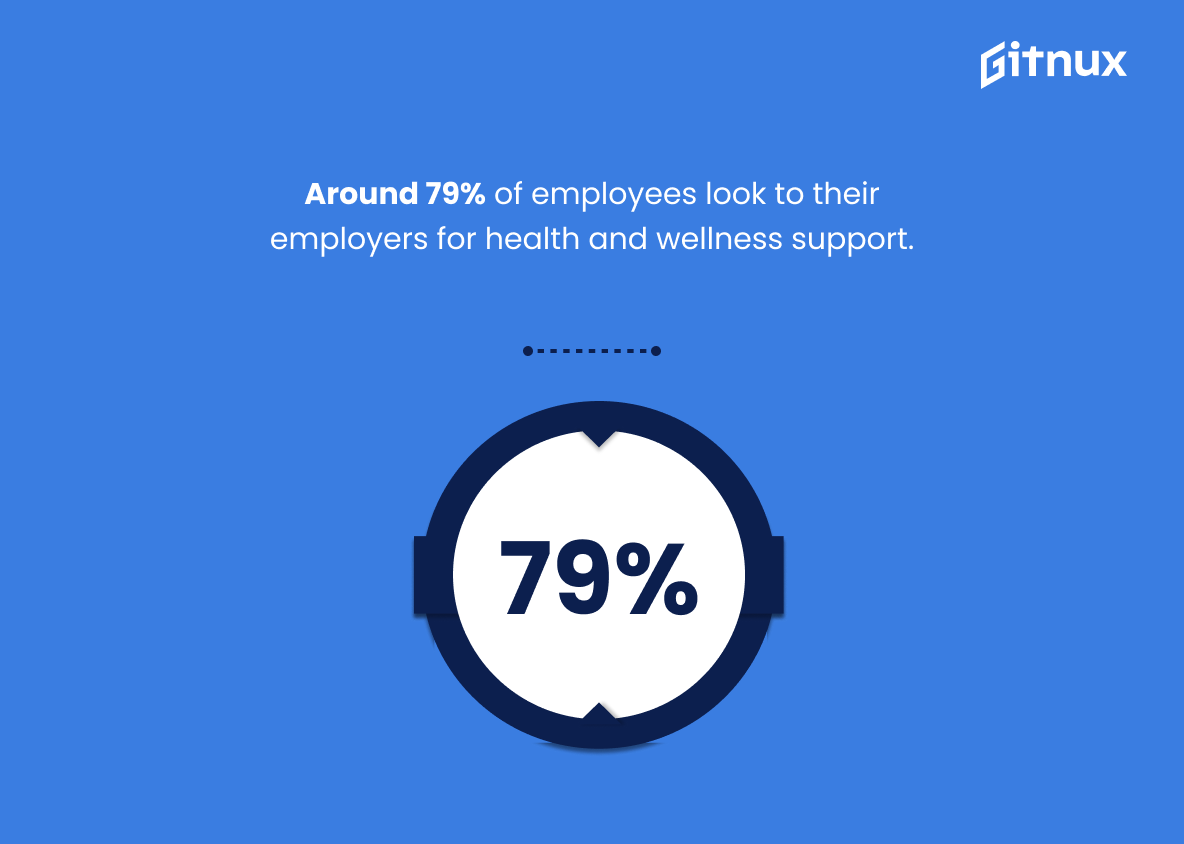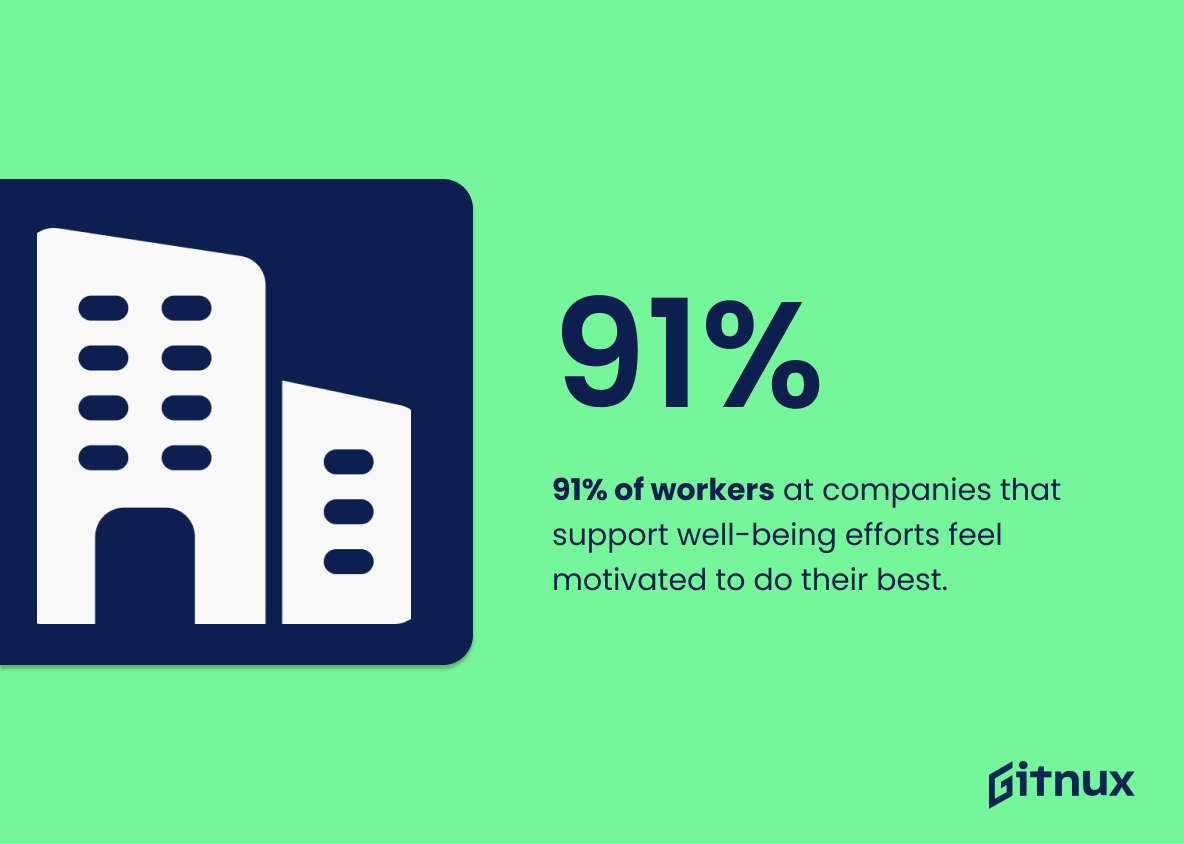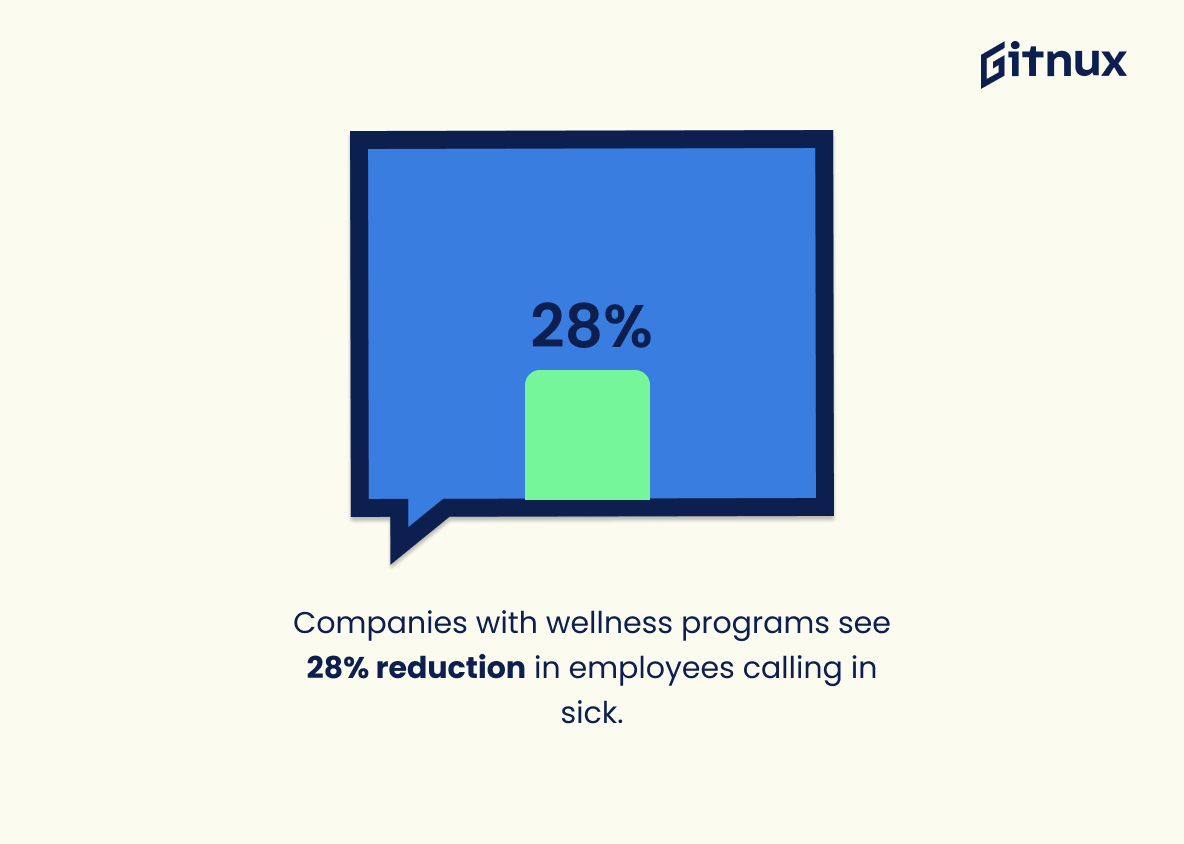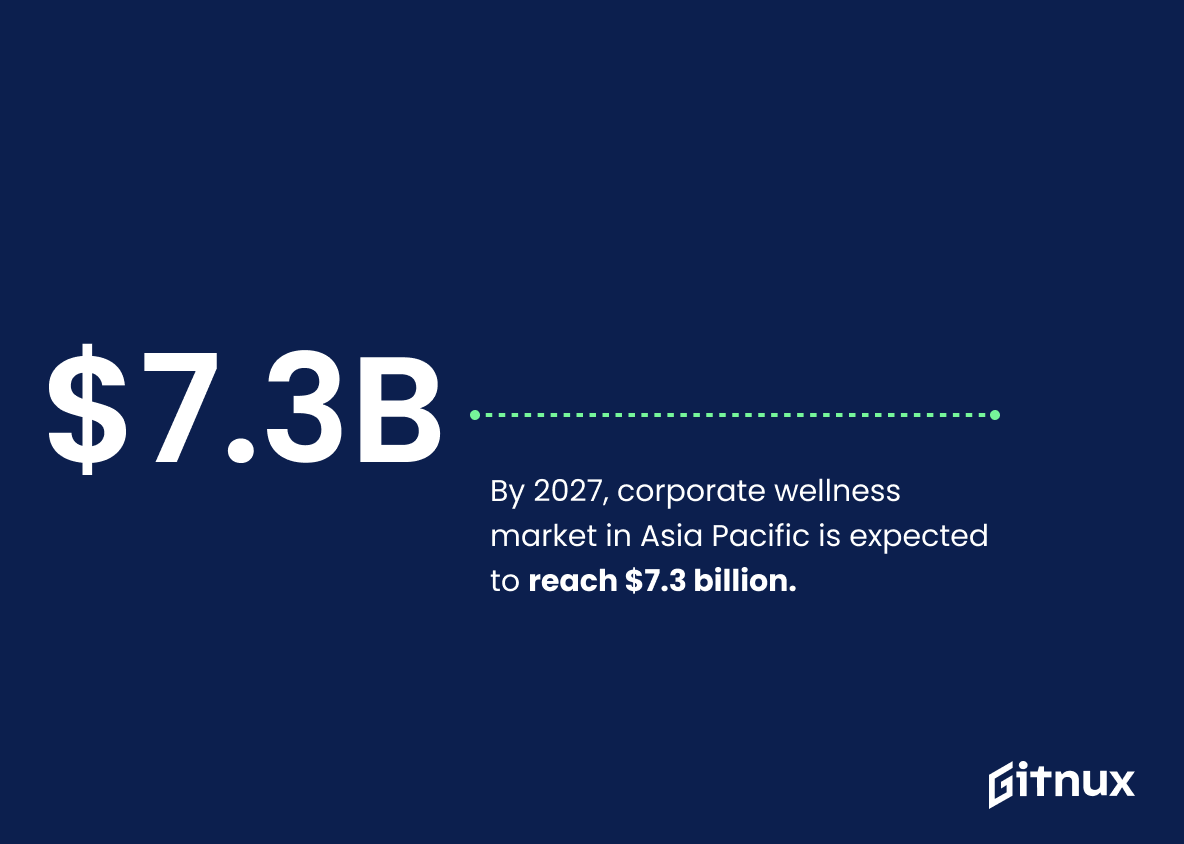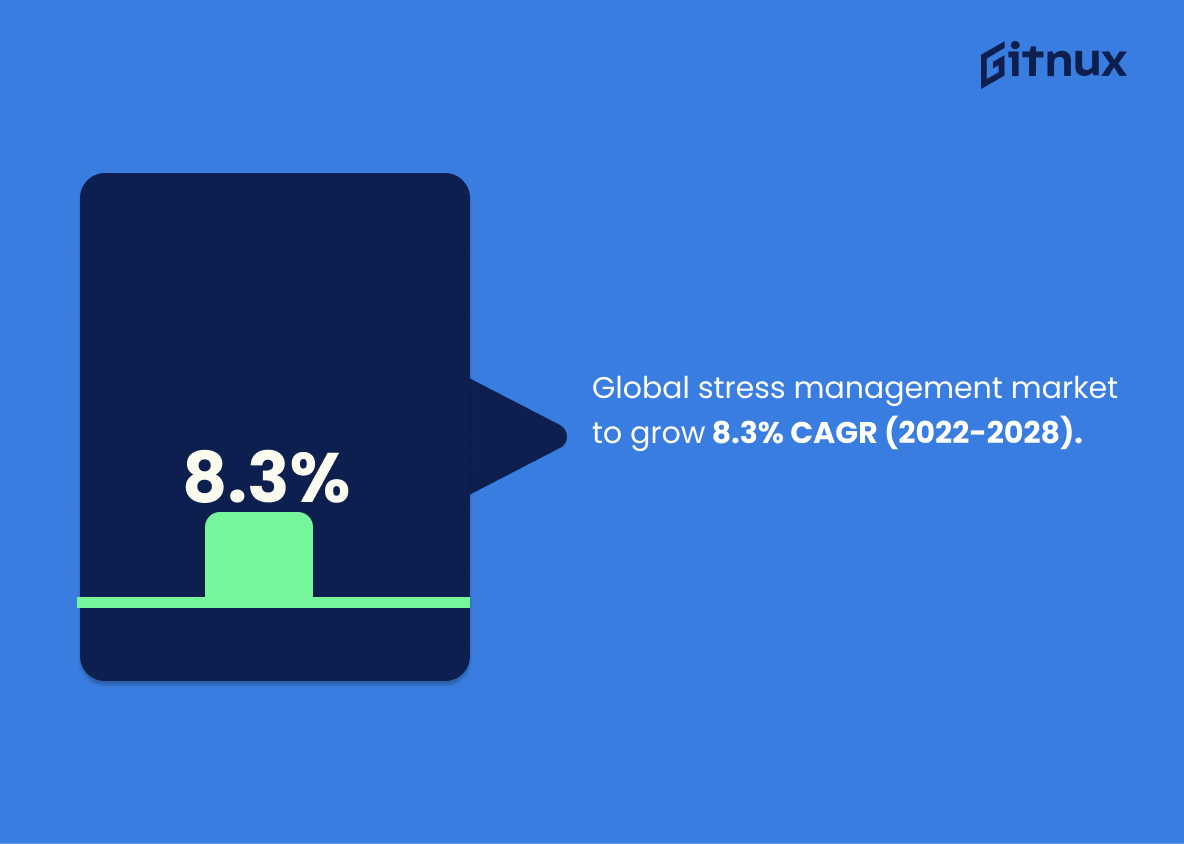The Corporate Wellness Industry is a dynamic landscape that is constantly evolving, spurred by increasing awareness of the critical role that employee health and wellbeing play in organizational productivity and growth. Cloaked in a veil of statistical data, this industry presents intriguing insights that are not only substantial but also instrumental for businesses globally. Our blog post will delve deep into the heart of Corporate Wellness Industry Statistics, offering a nuanced understanding of this sector’s breadth and depth. Whether you’re a seasoned industry player, a budding entrepreneur, or simply an intrigued reader, these statistics promise to shed light on trends, challenges, growth patterns, and opportunities that define the current corporate wellness sphere. Join us as we unravel the intricate tapestry of numbers that tell the compelling story of the Corporate Wellness Industry.
The Latest Corporate Wellness Industry Statistics Unveiled
The global corporate wellness market size was valued at $61.95 billion in 2021.
Highlighting the valuation of $61.95 billion for the corporate wellness market in 2021, elevates the enormity of the industry, indicating just how integral wellness programs have become within corporate culture on an international scale. This hefty figure serves as an influential benchmark that underscores the significant investments companies are making towards employee health and well-being. Such a statistic pulsates with relevance, proving that corporate wellness is not an optional extra but a vital mainstay in businesses worldwide. This billion-dollar valuation can certainly rouse substantial interest, sparking insightful dialogues around current investments, potential developments and future projections of this impactful industry.
The corporate wellness industry is expected to grow at a Compound Annual Growth Rate (CAGR) of 7.0% from 2022 to 2028.
Dipping our toes into the ocean of numbers, the forecasted Compound Annual Growth Rate (CAGR) for the corporate wellness industry projects a fascinating picture. With an anticipated rise of 7.0% from 2022 to 2028, it paints a landscape where this industry stands on the brink of considerable expansion. In the background of a blog post on Corporate Wellness Industry Statistics, those reading out the figures would instantly appreciate the substantial boom awaiting this sector. This steadied incline highlights increased investment and interest in promoting health and wellbeing in the workplace, thereby intensifying the spotlight on corporate players in the wellness niche. It nudges them to keep pace with this growth, innovatively and competitively. Thus, this 7.0% CAGR becomes much more than a statistic; it serves as a compass guiding the industry’s trajectory, a heartbeat attesting to its vibrancy, and a stirring wake-up call for those eager to conquer the corporate wellness frontier.
North America accounted for the largest share of more than 40.0% of the total revenue in 2021.
Unveiling the prominent role North America plays in the corporate wellness landscape, it is striking to note that in 2021, over 40.0% of the total revenue in this sector originated from this region. This invaluable data underscores North America’s dominance and could aid in comprehending the regional trends and patterns of the wellness industry. This could further stimulate meaningful conversations around the achievements and potential opportunities within this domain, as well as encourage organizations outside North America to emulate successful practices and strategies to boost their corporate wellness initiatives.
As of 2020, almost 70% of US employers offer wellness programs.
Undoubtedly, the intriguing figure of 70% of US employers offering wellness programs by 2020 offers a vivid snapshot into the growing significance of the corporate wellness industry. Not only does it underpin the increasing awareness and focus on employee health and wellness, but it also signifies the profound shift in organizational culture and values. This compelling data point serves as a testament to the expanding landscape of employer-sponsored wellness programs, thereby underscoring a key trend in the corporate wellness industry. It further delineates the extent of investment and faith corporations are placing in wellness programs, spotlighting them as an integral part of employee benefits. Essentially, it paints a progressive portrait of the corporate wellness industry, underlining its established and growing role within the corporate ecosystem.
Wellness programs lead to an average of 25% reduction in health cost and absence cost.
Delving into the realm of Corporate Wellness Industry Statistics, it’s fascinating to discover the tantalizing figure of a 25% reduction in health and absence cost attributed to wellness programs. This statistic pulsates at the heart of the corporate wellness narrative, illuminating the significant financial benefits that wellness initiatives propound.
Essentially, this substantial reduction underscores the instrumental role wellness programs play in slashing the financial burden experienced by companies due to employee illness or absenteeism. In essence, it serves to exemplify that investing in employee wellness isn’t simply an altruistic endeavor, it’s a strategic financial move.
Moreover, the 25% reduction illuminates wellness programs as a twin-flame solution, diminishing not only health-related costs but also the indirect costs born from absence in the workplace. This intertwining of benefits amplifies the value proposition of wellness initiatives, casting them as a robust antidote against both the physical and intangible ailments that can plague companies. Thus, this statistic erects a compelling case for the indispensable role of wellness programs in the corporate landscape.
Around 92% of small businesses offer some form of wellness program.
Spotlighting the statistic that around 92% of small businesses provide some form of a wellness program helps to illustrate the pervasiveness and significance of wellness initiatives across all scales of businesses, not just large corporations. Profoundly, this figure uncovers the growing recognition within the small business community of the link between employee health, productivity, and overall business performance. Peeling back the layers of this data point, we see that it reinforces the narrative of wellness being not just a corporate trend, but a small business strategy demonstrating the rich tapestry of the corporate wellness industry overall. Thus, there is no ‘small’ in the wellness initiatives’ impact where this statistic allows us a comprehensive view of the corporate wellness landscape.
More than 85% of companies with 1000 plus employees have wellness programs.
Painting a vibrant picture of the rising prominence of wellness programs in the corporate world, the fact that over 85% of large-scale companies (those boasting 1000 plus employees) have implemented wellness schemes is nothing short of a testament to the perceived value of wellness initiatives in these organizations. It signifies an evolving consciousness towards the importance of employee well-being within corporate cultures, indicating a marked shift from traditional, often more austere, business practices. Moreover, it demonstrates the potential scale and robust growth opportunities for the corporate wellness industry, making it a beacon for investors and entrepreneurs alike. In essence, it lays bare a compelling narrative of an industry ripe for exploration and full of potential in the landscape of tomorrow’s enterprises.
The highest application sub-segment of corporate wellness in 2020 was health risk assessment.
In anchoring a blog post to the reality of the Corporate Wellness Industry Statistics, it’s intriguing to spotlight the apex of application sub-segments in 2020, where health risk assessment reigned supreme. This spirals to the forefront a comprehensive dialogue about the intense focus corporations have on assessing health risks. With our current global health climate, this is more than just a number or a trend—it’s a testament to the importance companies are placing on the health and wellbeing of their employees. This enlightening nugget of information not only drives the dialogue about present industries’ concerns, but also paves the way to discuss future possibilities and trends in corporate wellness initiatives.
In 2020, the US corporate wellness market was worth approximately $31.6 billion.
This robust figure of $31.6 billion, standing as the approximate worth of the US corporate wellness market in 2020, serves as a testament to the escalating significance of corporate wellness in America. As the lynchpin of the blog post, it illuminates the impressive financial scale and influence this industry commands. Further, it sets the tone for understanding the potential impact and relevance of corporate wellness initiatives on overall business outcomes, employee productivity, and workplace culture.
Around 79% of employees look to their employers for health and wellness support.
“A highlight of the dynamism within the corporate wellness industry is the palpable fact: Approximately 79% of employees are found turning to their employers for health and wellness support. Projecting such a number frames the ample opportunities and responsibilities corporations bear when it comes to assisting their workforce in their pursuit of a healthy lifestyle. With nearly four in every five employees seeking wellness advice in the workplace, this sheds profound light on the growing necessity for corporations to not only offer, but also enhance their wellness programs, influencing positively both an individual’s performance and general workplace environment. The statistic ultimately provides impetus, underscoring the critical role health support stands to play in an employer’s obligation portfolio.”
91% of workers at companies that support well-being efforts feel motivated to do their best.
Dive into the depths of the Corporate Wellness Industry and you’ll discover a gem of a statistic: a whopping 91% of workers at companies that prioritize well-being efforts resonate with motivation to give their absolute best. Let this fact not just linger, but simmer and spark a conversation – it throws a spotlight on the potentially immense rewards for a company who invests in employee wellness. It’s a testament to the role that wellness programs play in boosting employee morale, engagement, and productivity. Think about it: a motivated employee isn’t just a happier one; they’re often more devoted, resourceful, and innovative too. In an industrial landscape that values workforce efficiency and productivity, this statistic serves as a compelling homage to the vital influence of workplace well-being on an organization’s success.
Companies with wellness programs see 28% reduction in employees calling in sick.
In the echelons of corporate wellness industry statistics, the hard truth of ‘28% reduction in employees calling in sick within companies implementing wellness programs’ is a game-changer. It fills the gaps, knitting a far-reaching narrative about the effectiveness of wellness initiatives in creating a healthier, more productive work environment. Beyond the crystal-clear numbers, this statistic shines a light on how wellness programs are transforming employees’ health, reducing absenteeism, and shaping the corporate world in novel, impactful ways. It paints a picture of incredible potential for growth within the wellness industry and the massive impact it can have on every company’s bottom line.
By 2027, corporate wellness market in Asia Pacific is expected to reach $7.3 billion.
Projecting trends can help us trace the trajectory of a rising star, and in the case of Corporate Wellness Industry Statistics, the proof certainly seems to be in the pudding. The anticipated boom in Asia Pacific’s Corporate Wellness Market, touching an impressive $7.3 billion by 2027, signals not only a burgeoning financial opportunity but an evolving corporate culture in the region. This projection not just strengthens the narrative of a flourishing industry but also sets a lucrative groundwork for investors, startups, and businesses eyeing expansion. Furthermore, it underscores an increased emphasis on employee wellness in organizational policies, painting an apparent shift in paramount corporate values, thus becoming a statistic worth our attention.
Globally, stress management is expected to be the fastest-growing corporate wellness market segment at a CAGR of 8.3% from 2022 to 2028.
Integrating this intriguing figure into our exploration of the Corporate Wellness Industry adds a vibrant stroke of insight to our statistical canvas. Examining the blazing 8.3% CAGR forecast for stress management from 2022 to 2028, we witness an undeniable trend within the corporate wellness market. This dynamic surge illustrates the mounting importance corporations are placing on employee mental health and well-being, reflecting a changing cultural and corporate mindset. Therefore, disseminating this impressive growth rate is vital to understanding the future path and potential impact of the wellness industry in the business world. Furthermore, it underscores the rising demand for stress management solutions in workplaces across the globe, etching a robust profile of the forthcoming opportunities and challenges within the Corporate Wellness arena.
On average, companies that invested in corporate wellness programs saw a $1.42 in savings per $1.00 spent.
Shining a spotlight on a crucial insight, this statistic effortlessly paints a vivid picture of the remarkable cost-effectiveness of corporate wellness programs. Profoundly, every dollar committed to the wellness industry morphs into a heartening $1.42 in savings for the investing companies. This not only broadens the profit horizon but also casts an encouraging light on the undeniable potential of corporate wellness investments. When layered into the rich tapestry of a blog post on Corporate Wellness Industry, such a persuasive fact redefines the discourse, eclipsing mere speculation with a compelling narrative of tangible returns. It unequivocally invites businesses to envision corporate wellness not as an expendable luxury but as an astute investment yielding both, enriched employee well-being and a healthier bottom line.
In EMEA countries, the corporate wellness market is expected to grow at a CAGR of 6% by 2024.
Predicting the pulse of the corporate wellness market, particularly in EMEA countries (Europe, Middle East, and Africa), this statistic acts as a litmus test for gauging market trends and fostering investment decisions. Singling out a Compound Annual Growth Rate (CAGR) of 6% until 2024, it hints at a robust growth trajectory, thereby signaling investor confidence and innovative opportunities in this sphere. Set against the backdrop of a blog post on corporate wellness industry statistics, it illuminates potential developments in the market, shaping the narrative around the industry’s health and evolution. Furthermore, this projection serves as a beacon for wellness companies planning their strategic roadmap or an entrepreneur pondering within the landscape of corporate wellness ventures.
About 60% of employers offer wellness programs to employees’ partners too.
The panorama of the corporate wellness industry gets an intriguing dimension with the revelation that nearly 60% of employers extend wellness programs to employee’s partners as well. It’s an impactful beacon, shedding light on a broader, more inclusive wellness movement within corporations. This paves the way for improved employee health monitoring and creates a ripple effect, positively influencing not just the employee but the household. Including partners signifies how the industry is expanding its wisdom beyond the boundaries of office walls.
This data echoes the evolution of corporate responsibility, mirroring that employers aren’t merely limiting their wellness incentives to staff. They are dipping their toes into a wider pool, contributing to community health. Hence, in a blog post discussing the corporate wellness industry, such data serves as a testament to the holistic approach businesses are taking towards wellness, emphasizing the industry’s potential for growth and underscoring the depth of its influence.
In 2021, top performing companies were 3.5 times more likely than others to have a comprehensive wellness program.
Reflecting on the prosperity of businesses in 2021, it’s fascinating to observe the formidable correlation between top-performing companies and the implementation of all-inclusive wellness programs. An enchanting illustration of data dictating that these success stories were 3.5 times more prevalent among companies prioritizing employee well-being. This captivating interplay between wellness initiatives and company performance mirrors not only the rising significance of physical and psychological health in the workspace but also strengthens the case for the corporate wellness industry’s influential role in shaping today’s commercial landscape. The figures serve as intriguing breadcrumbs for companies that are yet to embrace the power of comprehensive wellness programs and their potential to supercharge productivity and overall performance.
Budget constraints are the number one challenge for companies that do not invest in wellness programs, with 43% of companies citing this as a reason.
Shedding light on the dominant role of budget constraints in deciding wellness program investment, the data point that places the chokehold of financial resources at the top spot for 43% of companies sends a clear message. This statistic serves as a compass in the uncharted territories of the corporate wellness industry statistics, providing crucial data on what keeps businesses from adding wellness programs to their enterprises.
For the author, this can serve as a springboard to delve into discussions on how companies can creatively manage their budget without compromising employees’ well-being. For a business leader reading the blog post, this statistic is a wake-up call on the urgent exploration of cost-effective wellness strategies.
Moreover, for players in the corporate wellness industry, it’s an eye-opener towards the need to design cost-effective solutions that cater to smaller businesses or those with tight budget constraints. Overall, it’s a crucial data point inciting meaningful conversations and actions towards better wellness in the workplace.
Companies with highly effective wellness programs report significantly lower voluntary attrition than do those whose programs have low effectiveness (9% vs. 15%).
Drawing upon this insightful figure, one can discern the pivotal role that winsome wellness programs play in nurturing a more committed and satisfied workforce. The substantial disparity in voluntary attrition rates – with a 9% rate in companies boasting high-performing wellness initiatives versus a whopping 15% in those with less effective programs – underlines the eminent power of wellness strategies. Not only do they facilitate a healthier environment, but they also form a magnetic force, attracting and esgriming employees, thereby drastically reducing turnover. In crafting a captivating blog post on Corporate Wellness Industry Statistics, such a figure illustrates the undeniable impact of investing in wellness programs within corporate culture.
Conclusion
The Corporate Wellness Industry is no longer a choice, but a necessity in the business world. The industry is experiencing exponential growth, underpinning the importance of employee health and wellbeing in boosting productivity and overall business performance. Significant statistics prove its effectiveness and show that businesses have a lot to gain from investing in corporate wellness programs. As we move forward, we can expect the sector to continue its upward trajectory, with businesses increasingly prioritizing wellness strategies for a more prosperous future.
References
0. – https://www.www.weforum.org
1. – https://www.www.achievers.com
2. – https://www.www.wellnesscorporatesolutions.com
3. – https://www.www.businesswire.com
4. – https://www.www.fortunebusinessinsights.com
5. – https://www.www.reportsanddata.com
6. – https://www.www.ajg.com
7. – https://www.www.rand.org
8. – https://www.www.businessgrouphealth.org
9. – https://www.www.bcbs.com
10. – https://www.www.statista.com
11. – https://www.www.grandviewresearch.com
12. – https://www.www.shrm.org
13. – https://www.www.r2iclubforums.com
14. – https://www.www.towerswatson.com
15. – https://www.upshotstories.com
